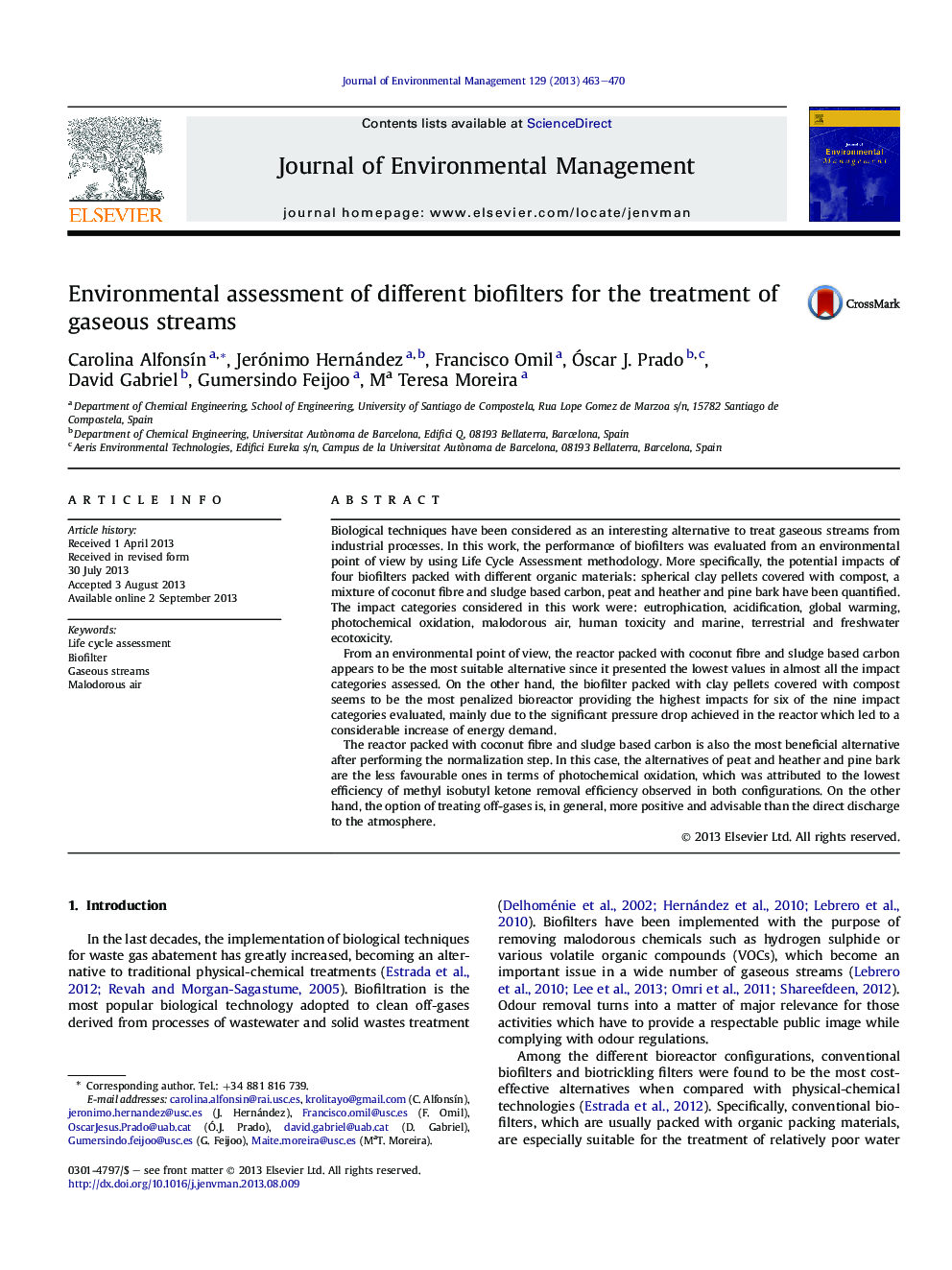| Article ID | Journal | Published Year | Pages | File Type |
|---|---|---|---|---|
| 1056190 | Journal of Environmental Management | 2013 | 8 Pages |
•Four different configurations of biofilters were assessed by LCA.•The pressure drop led to the largest energy use and worst environmental performance.•Electricity was the main contributor to toxicity related impact categories.•Photochemical oxidation significantly contributes to the normalization index.
Biological techniques have been considered as an interesting alternative to treat gaseous streams from industrial processes. In this work, the performance of biofilters was evaluated from an environmental point of view by using Life Cycle Assessment methodology. More specifically, the potential impacts of four biofilters packed with different organic materials: spherical clay pellets covered with compost, a mixture of coconut fibre and sludge based carbon, peat and heather and pine bark have been quantified. The impact categories considered in this work were: eutrophication, acidification, global warming, photochemical oxidation, malodorous air, human toxicity and marine, terrestrial and freshwater ecotoxicity.From an environmental point of view, the reactor packed with coconut fibre and sludge based carbon appears to be the most suitable alternative since it presented the lowest values in almost all the impact categories assessed. On the other hand, the biofilter packed with clay pellets covered with compost seems to be the most penalized bioreactor providing the highest impacts for six of the nine impact categories evaluated, mainly due to the significant pressure drop achieved in the reactor which led to a considerable increase of energy demand.The reactor packed with coconut fibre and sludge based carbon is also the most beneficial alternative after performing the normalization step. In this case, the alternatives of peat and heather and pine bark are the less favourable ones in terms of photochemical oxidation, which was attributed to the lowest efficiency of methyl isobutyl ketone removal efficiency observed in both configurations. On the other hand, the option of treating off-gases is, in general, more positive and advisable than the direct discharge to the atmosphere.
